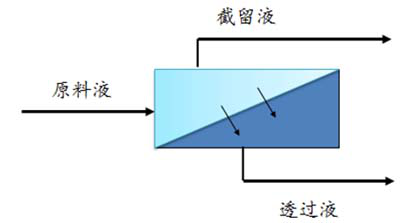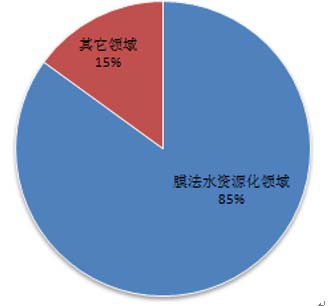From a narrow sense, the water treatment generally refers to the sewage treatment; broadly speaking, water treatment can be extended to the water treatment, water operations, sludge treatment, water reuse, membrane water treatment, desalination, black and odor water treatment, Urban water supply and drainage planning, sponge city and many other concepts. With the development of the national economy and the improvement of environmental protection consciousness, the concept of environmental protection management has changed from "total control" to "quality control". The water treatment industry in our country is experiencing the evolution from "narrow water treatment" to "generalized water treatment".
The shortage of water resources and the continuous growth of water demand have resulted in serious contradiction between supply and demand of water resources. In this context, water recycling is the only way to solve the contradiction between supply and demand, which determines the water treatment industry in the next longer period of time will have a rigid demand for properties, continue to maintain a high degree of prosperity.
On the other hand, in the environmental management from the "total control" to "quality control" under the guidance of ideas, the development direction of the water treatment industry is also quietly changing - from the traditional "narrow water" to "general water treatment "Evolution. Market focus on the focus of the "black-odor water treatment", "membrane water treatment", "sponge city", "sludge treatment" as a representative of the higher degree of specialization, better governance segmentation.
According to the data released by the World Bank in 2016, the total water resources in China was 2,188 billion cubic meters, ranking second only to Brazil, Russia, Canada and the United States, ranking the fifth in 214 countries and regions. Resources, only 2062 cubic meters, is one-third of the world average, ranked 106 in the world. Per capita water scarcity is the basic national condition of our country.
China's per capita water resources is only the world average of 1/3 (units, cubic meters)
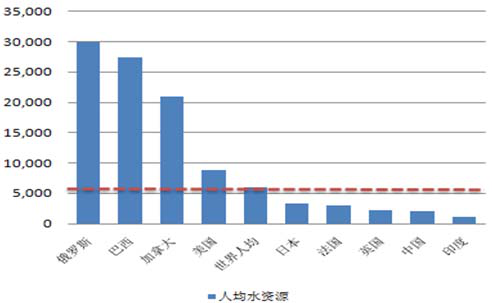
Surface water in the IV class water quality of water accounted for 4 into
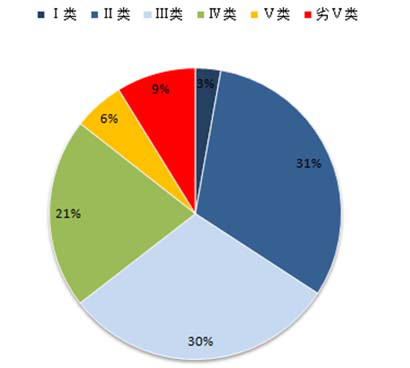
According to statistics, at present, the proportion of water quality in Class I, Class II, Class III, Class IV, Grade V and Grade V of surface water is 31%, 30%, 21%, 6%, 9% and 3% Ⅳ and below the class of water quality accounted for nearly 4 percent, water pollution is serious. Annual water pollution to human health, industrial production, agricultural production and aquaculture and other aspects of economic losses caused by about 240 billion. . In 2014, the total discharge of waste water in China was about 71.6 billion tons, up nearly 40 percent from 51.4 billion tons in 2005, and 3.4 percent in 2005 and 2014 respectively, and maintained steady growth year by year.
Over the past 10 years, with the population growth, urban construction and economic growth, the overall water consumption showed a sustained growth in the overall situation, in 2015 reached 618 billion cubic meters. (Of which the total water consumption in the country declined by 1.4% in 2014, due to the first strictest water management system assessment, as well as the comprehensive reform of agricultural water pricing and the differential pricing policy for industrial water use. ) 05 to 15 years of total annual growth rate of water is about 0.93%, which calculated that by 2030 the total water consumption will reach 710 billion cubic meters. This forecast and the "National Water Resources Planning" delineated 2030 water limit is not more than 700 billion cubic meters of basically the same. Therefore, in the foreseeable future, water consumption will continue to grow.
From a narrow sense, the water treatment generally refers to the sewage treatment; broadly speaking, water treatment can be extended to the water treatment, water operations, sludge treatment, water reuse, membrane water treatment, desalination, black and odor water treatment, Urban water supply and drainage planning, sponge city and many other concepts. With the development of the national economy and the improvement of environmental protection consciousness, the concept of environmental protection management has changed from "total control" to "quality control". The water treatment industry in our country is experiencing the evolution from "narrow water treatment" to "generalized water treatment".
From "narrow water treatment" to "generalized water treatment"
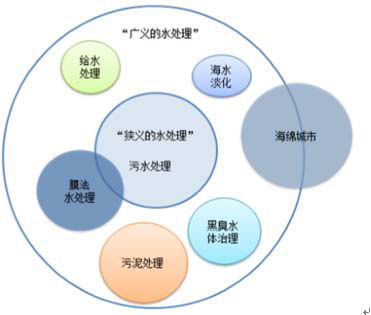
Membrane water treatment has many advantages, such as low energy consumption, simple process, stable operation and high effluent water quality, compared with the traditional water treatment methods, and has been popularized and applied in many fields. With the environmental protection guiding ideology to the "quality" of change, sewage discharge indicators become more stringent, membrane water treatment industry will remain more than 20% high-speed growth, annual output is expected from 2015 85 billion, to "thirteen" About 200 billion.
A membrane is a material having a selective separation function, which may be in the form of a solid, liquid or gaseous state, existing between the two fluids, or attached to the microvoids of the support or carrier. Membrane separation technology refers to membrane separation medium, through the membrane on both sides of the imposition of driving force (such as the concentration difference, pressure difference or potential difference), so that the raw material side of the selective passage to achieve separation and purification of a method.
Membrane Separation Technology
Membrane water is the main application of membrane separation technology
Membrane technology Water resources technology is widely used
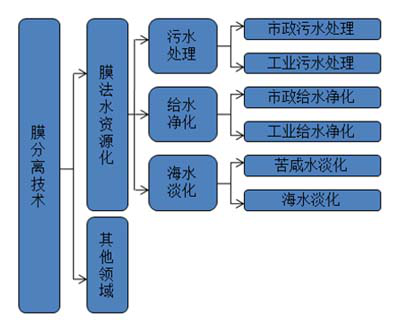
Membrane water treatment technology is mainly used in sewage treatment (including municipal sewage treatment and industrial wastewater treatment), water purification (including municipal water purification and industrial water purification), desalination (desalination) and pure water preparation and other fields.
According to the depth of treatment can usually be divided into a treatment of sewage treatment, secondary treatment and advanced treatment. The main purpose of primary treatment is to remove suspended solids, often using physical methods, the removal rate of BOD5 is generally 20% to 30%; secondary treatment is to further remove the colloidal and soluble contaminants, often using biological Method, BOD5 removal rate of 90% or more; the depth of treatment in order to achieve a higher treatment and discharge requirements or for the purpose of wastewater reuse. Membrane technology is usually used to deal with secondary treatment of activated sludge effluent, or membrane processing system directly in the biochemical pool, instead of the original secondary sedimentation tank, flocculation sedimentation tanks and other links. The use of membrane technology transformation, the traditional sewage treatment process can directly produce high quality recycled water.
Traditional water treatment process
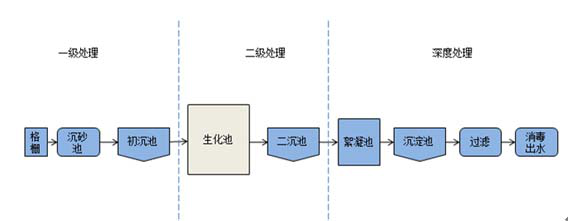
The most commonly used water purification process by the coagulation, sedimentation, filtration, disinfection of the four components, the basic to meet the existing requirements of drinking water GB. But with the new "drinking water health standards," the introduction of reference water quality indicators from the original 35 to 106, including a number of indicators only through traditional water purification technology to deal with difficult to achieve compliance. The membrane technology and the traditional process unit to optimize the combination of alternative or part of the original process to replace the link, can greatly improve the water quality, direct production of high quality drinking water and industrial water.
Membrane water treatment technology trends:
Membrane types and functions, the following areas will become the focus of future membrane water treatment technology development direction, with greater development potential and commercial value:
Nanofiltration membrane: nanofiltration membrane is a high degree of concern about the current water purification technology, because of its pore size between the reverse osmosis membrane and microfiltration membrane, so the removal of harmful substances in water, but also can retain the human body Beneficial minerals, while water quality fluctuations in the water supply conditions to ensure the stability of the final water supply. At present the field of water treatment for the use of nanofiltration membrane is still in its infancy, the domestic market share is almost all occupied by foreign brands.
Reverse osmosis membrane: Desalination and reclaimed water reuse as an important means of alleviating the contradiction between supply and demand of water resources, production scale will be greatly improved. As an important part of these two types of technology, reverse osmosis membrane will therefore usher in the market space for further release.
Inorganic membrane: The inorganic film, such as ceramic membrane, has many properties such as high temperature resistance, chemical stability and so on. It will be used in biological, medical, chemical, food and beverage manufacturing processes, as well as iron and steel wastewater, papermaking wastewater , Printing and dyeing wastewater and other special water treatment fields have broad application prospects.





